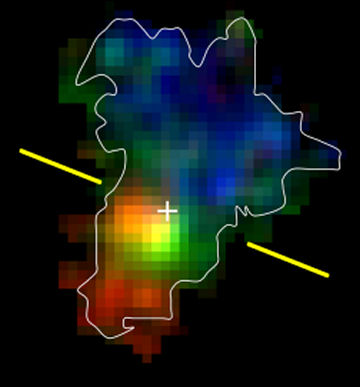The Milky Way today is a spiral-shaped disk of swirling gas orbiting a central hub of stars—signs of a mature galaxy. Researchers have assumed that most younger galaxies are misshapen and full of chaotically moving gas.

Now, astronomers have identified a galaxy that had already begun to resemble the modern Milky Way when the universe was only 3 billion years old, one-fifth of its current age.
In a high-resolution search of the heavens, a team led by Reinhard Genzel of the Max Planck Institute for Extraterrestrial Physics in Garching, Germany used one of the four Very Large Telescopes in Paranal, Chile, outfitted with a rapidly deformable mirror. The mirror compensates for the blurriness caused by Earth’s turbulent atmosphere.
This optical system revealed a large, gas-rich spiral galaxy similar to the Milky Way. The researchers were able to identify features as small as 4,000 light-years across even though the galaxy resides 10 billion light-years from Earth, they report in the Aug. 17 Nature.
The new images “provide the most detailed glimpse so far of the formation of a galaxy similar to our own Milky Way,” comments astrophysicist Robert Kennicutt of the University of Cambridge in England. Researchers had assumed that young galaxies were misshapen because collisions between galaxies were common in the young, dense universe. The existence of massive, well-formed galaxies at such an early time in the cosmos poses a challenge to theorists, Kennicutt adds.
The pictures are just a taste of images yet to come, as a new generation of large telescopes with deformable mirrors becomes standard equipment, Kennicutt says.







